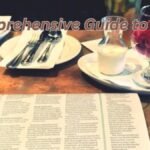Understanding and overcoming internalized homophobia is a crucial step towards self-acceptance and mental well-being for many individuals within the LGBTQ+ community.Internalized Homophobia: A Guide To Overcoming Shame And Self-Hatred provide a detailed, compassionate approach to identifying and addressing the effects of internalized homophobia, offering strategies to help transform shame and self-hatred into pride and self-love.
Internalized homophobia refers to the involuntary belief and acceptance of societal stereotypes and negative attitudes towards homosexuality by individuals who identify as part of the LGBTQ+ community. This internalization can manifest in various ways, including self-hatred, denial of one’s sexual orientation, and the devaluation of LGBTQ+ culture.
The Roots of Internalized Homophobia
Understanding where internalized homophobia stems from is essential for tackling it effectively. It often originates from:
- Cultural Norms and Societal Expectations: Societal norms that favor heterosexuality can lead to the marginalization of LGBTQ+ identities, causing internal conflict.
- Religious Beliefs: Many religious doctrines explicitly condemn homosexuality, fostering a sense of guilt and shame among LGBTQ+ individuals.
- Family Dynamics: Family rejection or lack of acceptance can deeply impact an individual’s self-perception and self-worth.
- Media Representation: Negative or stereotypical portrayals of LGBTQ+ individuals in media can reinforce harmful beliefs.
Recognizing Signs of Internalized Homophobia
Recognizing the signs of internalized homophobia is the first step towards addressing it. Some common indicators include:
- Negative Self-Talk: Believing that being LGBTQ+ is wrong or undesirable.
- Denial: Avoiding acknowledgment of one’s sexual orientation or feelings.
- Self-Isolation: Withdrawing from LGBTQ+ communities and relationships.
- Seeking Validation: Constantly seeking approval from heteronormative individuals or groups.
Read Also : The Alluring World of Post Touchd Sensations: Navigating the Aftermath of Physical Contact
The Impact of Internalized Homophobia
Internalized homophobia can have profound effects on an individual’s mental and emotional health, including:
- Low Self-Esteem: Continuous self-criticism can erode self-worth.
- Anxiety and Depression: Persistent feelings of shame and unworthiness can lead to mental health issues.
- Substance Abuse: Some may turn to alcohol or drugs to cope with their feelings.
- Relationship Difficulties: Struggles with self-acceptance can impact intimate and social relationships.
Overcoming Internalized Homophobia
Confronting and overcoming internalized homophobia involves a multifaceted approach. Here are some strategies to help transform self-hatred into self-acceptance:
1. Self-Reflection and Awareness
Start by acknowledging and understanding your feelings. Journaling can be a powerful tool for exploring your thoughts and identifying patterns of negative self-talk.
2. Education and Re-Education
Educate yourself about LGBTQ+ history, culture, and the contributions of LGBTQ+ individuals. This knowledge can help combat stereotypes and foster a sense of pride.
3. Seeking Support
Reach out to supportive friends, family members, or LGBTQ+ groups. Sharing your experiences and feelings with others can provide validation and understanding.
4. Professional Help
Consider seeking therapy with a professional experienced in LGBTQ+ issues. Cognitive-behavioral therapy (CBT) and other therapeutic approaches can help reframe negative thoughts and beliefs.
5. Positive Affirmations
Practice daily affirmations that celebrate your identity. Statements like “I am proud of who I am” can help reinforce positive self-perception.
6. Engage in LGBTQ+ Communities
Participating in LGBTQ+ events, organizations, and social groups can provide a sense of belonging and community support.
7. Addressing Religious and Cultural Beliefs
If religious or cultural beliefs are contributing to your internalized homophobia, seek out inclusive faith communities or cultural groups that affirm LGBTQ+ identities.
8. Mindfulness and Meditation
Incorporate mindfulness and meditation practices to help manage stress and cultivate a more compassionate self-view.
Transforming Relationships
Building and maintaining healthy relationships is crucial for overcoming internalized homophobia. Here’s how to foster better connections:
1. Open Communication
Communicate openly with your loved ones about your feelings and experiences. Honest conversations can foster understanding and support.
2. Setting Boundaries
Establish boundaries with individuals who are not supportive of your identity. Protecting your mental health is paramount.
3. Building Trust
Work on building trust in your relationships by being vulnerable and allowing others to support you.
4. Celebrating Authenticity
Celebrate your authentic self with people who appreciate and respect you. Authentic relationships are built on mutual respect and acceptance.
The Role of Allies
Allies play a crucial role in supporting individuals overcoming internalized homophobia. Here’s how allies can help:
1. Educate Themselves
Allies should educate themselves about LGBTQ+ issues and understand the impact of internalized homophobia.
2. Provide Support
Offer emotional support and validation to LGBTQ+ individuals. Listening without judgment can make a significant difference.
3. Advocate for Change
Advocate for LGBTQ+ rights and visibility in your community and workplace. Supporting inclusive policies and practices can help combat societal homophobia.
4. Be Mindful of Language
Use inclusive and affirming language when talking about LGBTQ+ issues. Avoid perpetuating stereotypes or harmful narratives.
Self-Care Practices
Incorporating self-care into your daily routine can significantly impact your journey to overcoming internalized homophobia. Consider these practices:
1. Physical Activity
Engage in regular physical activity to improve your mental and physical health. Exercise can be a great stress reliever.
2. Creative Expression
Explore creative outlets such as art, music, or writing to express your feelings and experiences.
3. Rest and Relaxation
Ensure you get enough rest and relaxation. Prioritize activities that help you unwind and de-stress.
4. Healthy Eating
Maintain a balanced diet to support your overall well-being. Nutritional health is closely linked to mental health.
5. Mindful Consumption of Media
Be mindful of the media you consume. Choose content that affirms and celebrates LGBTQ+ identities.
Embracing Your Identity
Embracing your LGBTQ+ identity is a vital part of overcoming internalized homophobia. Here’s how to start:
1. Celebrating Milestones
Acknowledge and celebrate personal milestones in your journey. Every step towards self-acceptance is worth celebrating.
2. Finding Role Models
Look for LGBTQ+ role models who inspire you. Their stories can provide hope and motivation.
3. Participating in LGBTQ+ Events
Participate in Pride events and other LGBTQ+ celebrations. These events can foster a sense of community and belonging.
4. Creating Safe Spaces
Create safe spaces for yourself at home and in your social circles. Surround yourself with people and environments that affirm your identity.
Conclusion
Overcoming internalized homophobia is a deeply personal and transformative journey. It involves recognizing the roots of internalized beliefs, seeking support, and actively working towards self-acceptance. By embracing your authentic self and fostering supportive relationships, you can move from a place of shame and self-hatred to one of pride and self-love. Remember, you are not alone in this journey, and there is a vibrant, supportive community ready to walk alongside you every step of the way.
Read More : TRA : Therapeutic Recreation Association Enhancing Lives Through Recreation
FAQs
What is internalized homophobia?
Internalized homophobia refers to the internalization of society’s negative attitudes towards homosexuality by individuals who identify as LGBTQ+, leading to self-hatred and shame.
How can I recognize internalized homophobia in myself?
Signs include negative self-talk, denial of one’s sexual orientation, self-isolation, and constantly seeking validation from heteronormative groups.
Why is overcoming internalized homophobia important?
Addressing internalized homophobia is crucial for mental and emotional well-being. It helps in building self-acceptance and healthier relationships.
Can therapy help with internalized homophobia?
Yes, therapy, especially cognitive-behavioral therapy, can be very effective in helping individuals reframe negative thoughts and beliefs.
How can allies support someone struggling with internalized homophobia?
Allies can educate themselves, offer emotional support, advocate for LGBTQ+ rights, and use inclusive language to support those struggling with internalized homophobia.
Is it possible to fully overcome internalized homophobia?
Yes, with persistent effort, support, and self-compassion, individuals can significantly reduce the impact of internalized homophobia and embrace their true selves.











